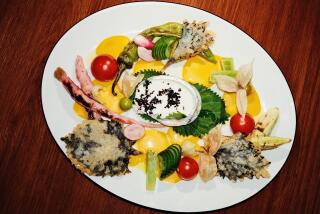This lambic-inspired beer is well qualified to represent the LBC (and Belgium)
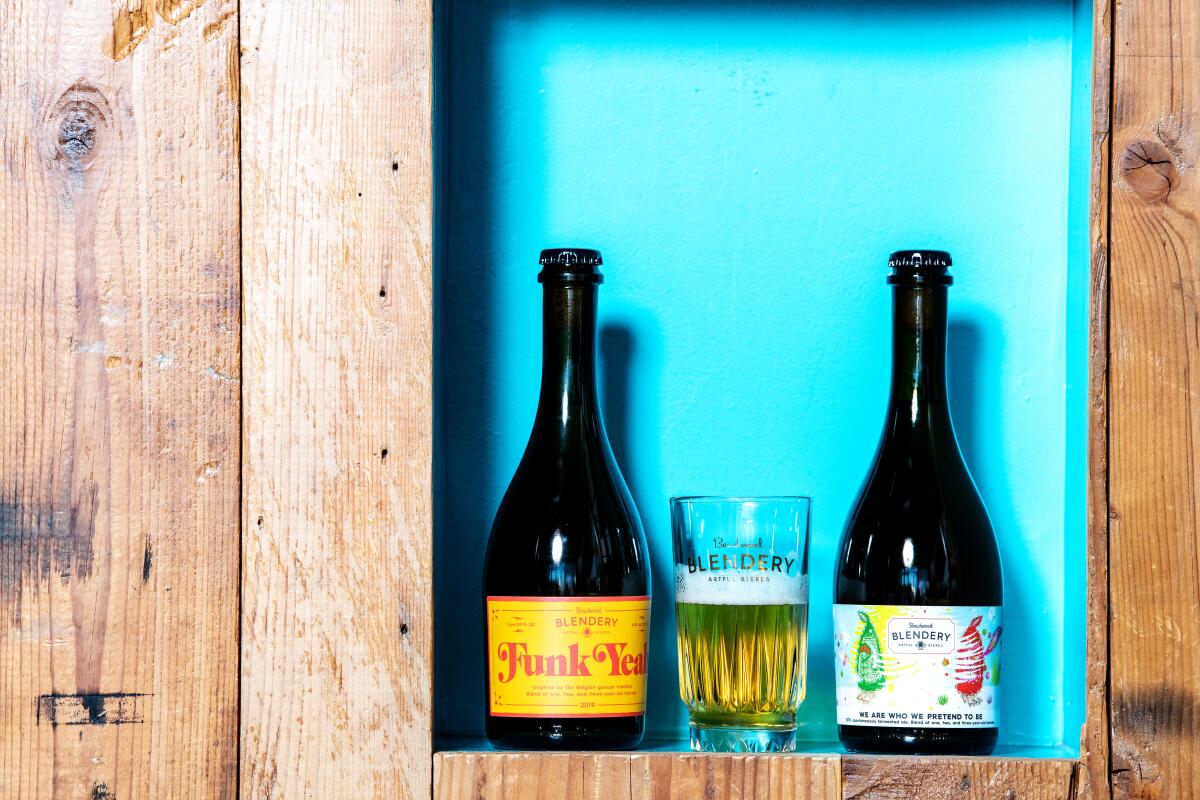
- Share via
Is it possible to capture the magic of lambic, the near-mythical Belgian wild ale, with beer produced in downtown Long Beach? That’s what Gabe Gordon set out to do when he opened Beachwood Blendery, the sour-beer-only brewery he launched five years ago.
His obsession began after drinking a bottle of Girardin Black Label 1882; he said it transformed his conception of what beer could be.
“It just blew my mind,” he said of lambic, the name of a family of sour, wild beers brewed in the Pajottenland region of Belgium.
Unconventional terms like “horse blanket” and “ripe French cheese” are often favorably (for the most part) associated with lambic’s otherworldliness, but such descriptors merely paint a partial picture. Along with the funk are floral, woody and citrus notes that harmonize to create a distinct and uncommon beer experience.
Gordon became a collector (he’s lost count but says his horde has surpassed quadruple digits) and an ambassador, stocking Beachwood BBQ, his Seal Beach restaurant and craft beer bar, with bottles and kegs.
But by 2012 lambic was no longer the beer world’s best-kept secret. Stocks of Cantillon and Drie Fonteinen (the Beatles and Stones of lambic breweries, the bottles Gordon hoarded) had become scarce as more American drinkers got hip to lambic’s appeal.
Gordon decided the best way to keep the taps flowing was to try his hand at producing lambic-style beers himself.
The idea wasn’t that far-fetched. Gordon’s Beachwood Brewing, which opened in Long Beach a year earlier and focused on non-wild “clean” beer such as IPAs, stouts and pilsners, was an out-of-the-gate success.
After years of trial and a lot of error, the Blendery, which sits around the corner from Beachwood Brewing (a second Beachwood Brewing outpost in Huntington Beach opened in 2017), has managed to pull off one of the only gueuze-style full-on spontaneous beers produced outside of Belgium with the release of We Are Who We Pretend to Be.
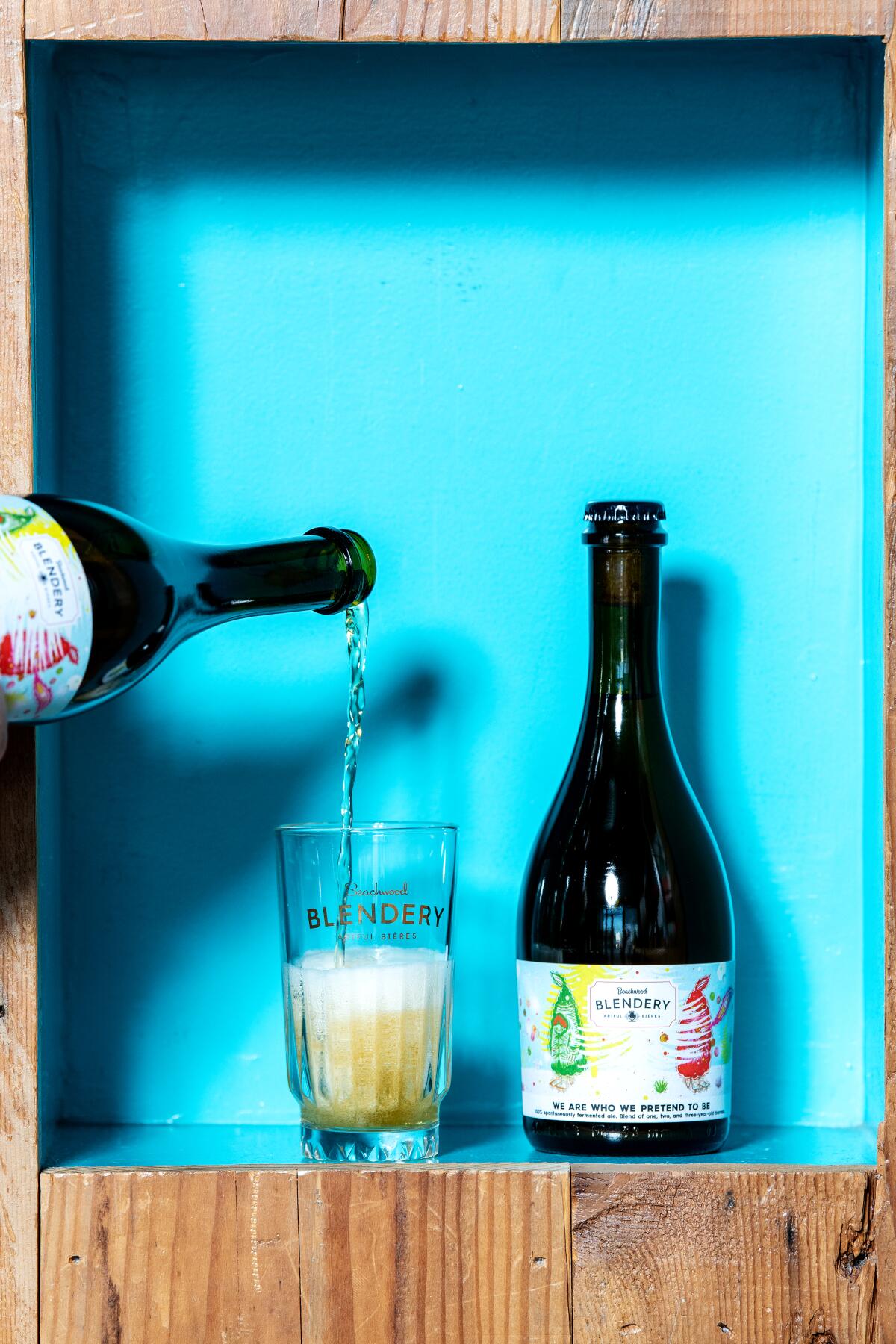
But it wasn’t an easy path to get there. If lambic is, as it is sometimes called, the true Champagne of beers (sorry, Miller High Life), then gueuze, which combines 1-, 2- and 3-year-old vintages, is the grand cru. The blend offers the full spontaneous spectrum: the light fruitiness of young lambic blended with the dry, earthy intensity of old lambic.
The first thing you notice stepping into the brewery’s chilly, musty confines are the oak barrels, 450 in all, stacked far and wide like a glimpse into Donkey Kong’s ultimate fantasy.
But tucked away in the back corner, hovering 20 feet overhead, is a shallow metal pool rarely seen in American breweries. Known as a coolship, it’s essential for brewing lambic-style beers.
Spontaneous fermentation, the process used to make lambic, is relatively straightforward: Wort, the sweet, malty precursor to beer, is poured into the coolship — and then left alone. As the liquid cools overnight, wild yeast and bacteria from the outside air and around the facility (this is the spontaneous part) join the party. They are key to developing complex flavors and aromas as the beer ferments for months (and occasionally years) in oak barrels. Like whiskey, individual barrels take on distinct characteristics. Blending is an essential part of the beer’s production and an art in and of itself.
“Spontaneous fermentation is kind of like the beer version of natural wine,” says Beachwood Blendery head brewer Harrison McCabe.
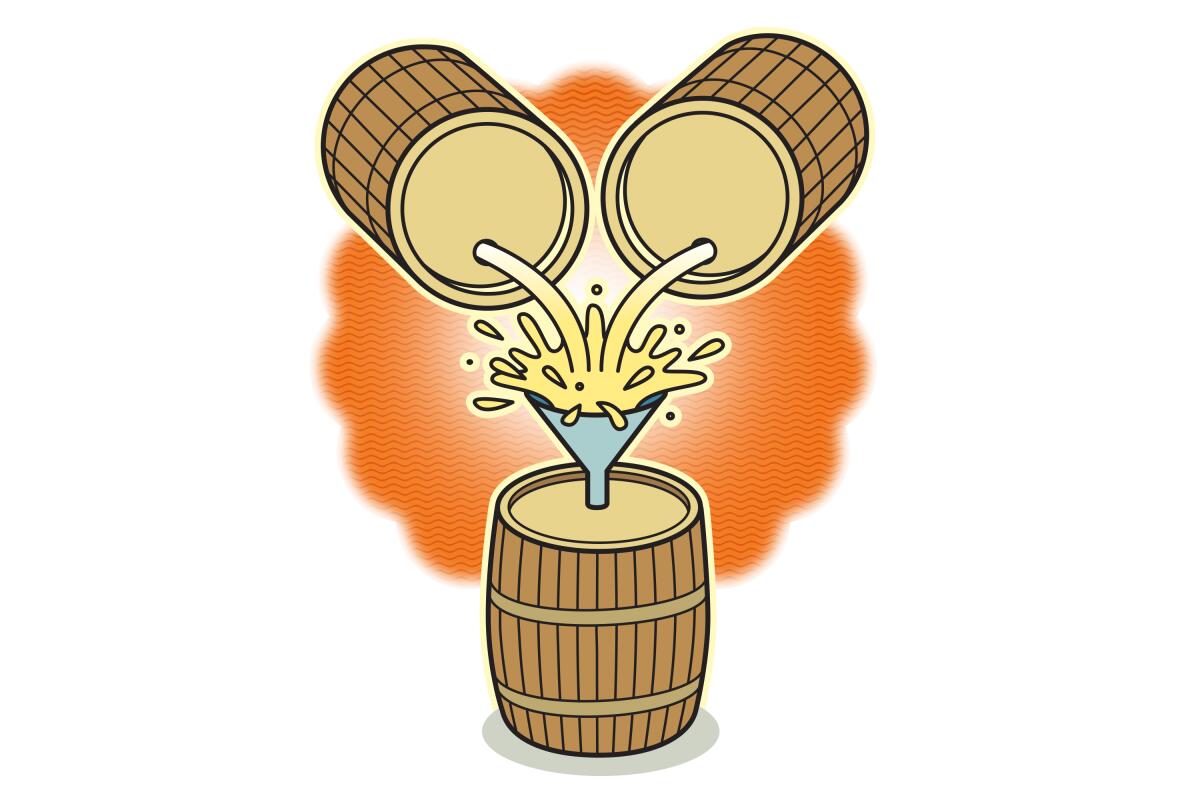
Not every spontaneously fermented beer is a lambic; to qualify as a lambic, several other traits need to be present, including the use of aged hops, which provide a muted bitterness, enhance funkiness and temper acidity.
Not all wild ales are spontaneously fermented. In fact, the vast majority develop in a far less romantic fashion. Instead of letting nature work its magic, the beers are pitched with a house- or lab-made culture. Think of it as the in vitro of brewing, only with yeast and bacteria. Though that process can yield spectacularly funky results, spontaneous fermentation raises the bar thanks to the inclusion of certain wild organisms that could only be introduced to the beer naturally.
“[They] create a lot of flavors and aromas that you’re not going to get from a lab pitch or a house culture pitch because those things die out right away,” says Ryan Fields, owner of Wild Fields Brewhouse in Atascadero, who previously brewed at the Blendery. “The only way you’re going to get those organisms is from doing spontaneous fermentation.”
It’s the X-factors that make spontaneous fermentation such a high-risk proposition, a lesson the Blendery learned quickly. Several early batches failed to ferment; others took on characteristics of hot dog water and rotten cabbage. (Though there are plenty of odd superlatives tied to wild ales, these are not among them.)
Ultimately the brewery ended up dumping nearly all of the spontaneously fermented beer produced over its inaugural year (currently around a third ends up down the drain).
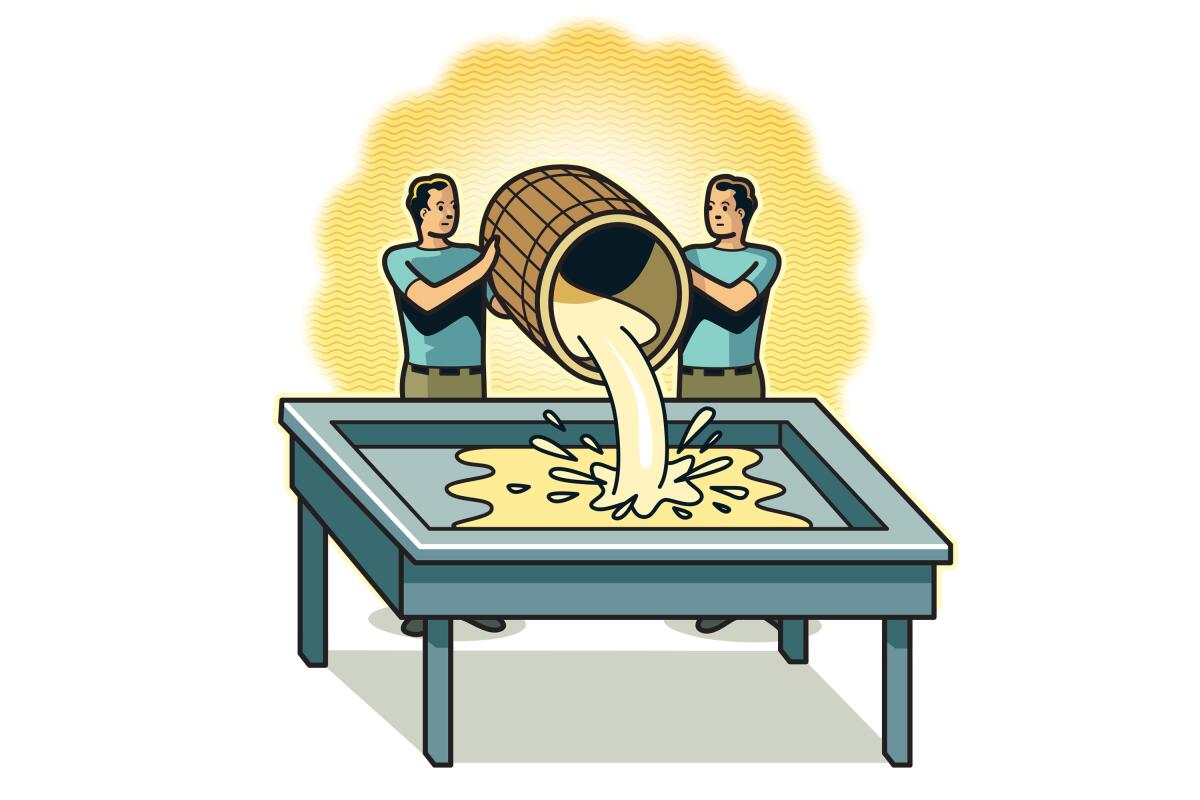
Further complicating matters is the fact that spontaneous fermentation is most successful in cooler weather, so its production window is extremely limited, particularly in Los Angeles. These limitations are the reason 90% of the beer produced by the brewery is not spontaneously fermented.
Which is what makes We Are Who We Pretend to Be all the more remarkable. Back in 2017, the brewery released its first fully spontaneous beer, Coolship Chaos. Subsequent batches, including fruited variants, have followed.
We Are Who We Pretend to Be is pronouncedly better. Earthy, with a subtle minerality and a citrus kick (the Long Beach terroir is distinctly lemony), the lambic-inspired beer held its own against some of the real-deal Belgians that were poured at the Fermentation Celebration held at the Blendery in December.
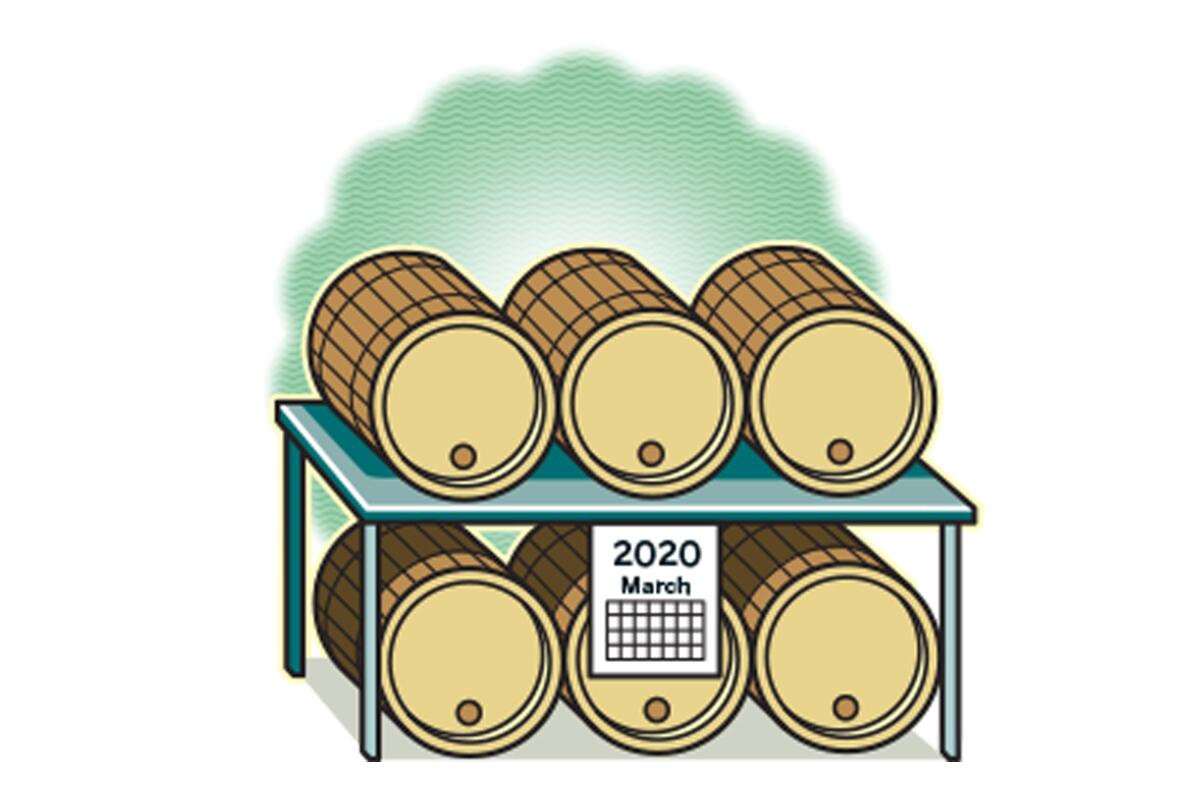
(It should be noted that although lambic is not a legally protected name, most breweries outside of Belgium, including the Blendery, don’t define their beers as such. “It’s their beer, it’s their region,” says Gordon. “Out of respect to them, we don’t call it that.” Descriptors such as “lambic-inspired” and “gueuze-inspired” are used instead.)
Though Gordon is pleased with the results of We Are Who We Pretend to Be, he says, “There’s more to do, more to learn and ways to improve it.
“I always said it would take 10 years,” he says, “to make something that I would be proud to bring to Belgium.”
Until then, We Are Who We Pretend to Be is currently available on draft and to go in bottles at Beachwood Blendery.
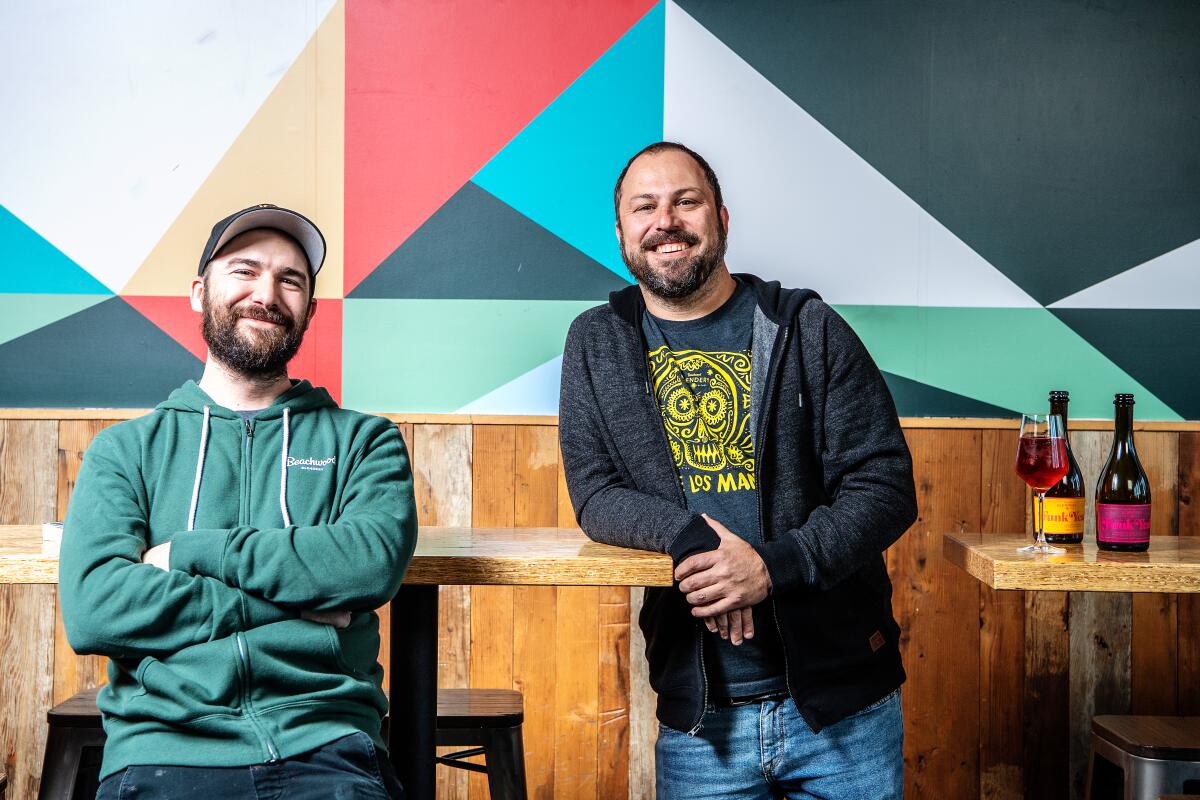
More to Read
Eat your way across L.A.
Get our weekly Tasting Notes newsletter for reviews, news and more.
You may occasionally receive promotional content from the Los Angeles Times.


